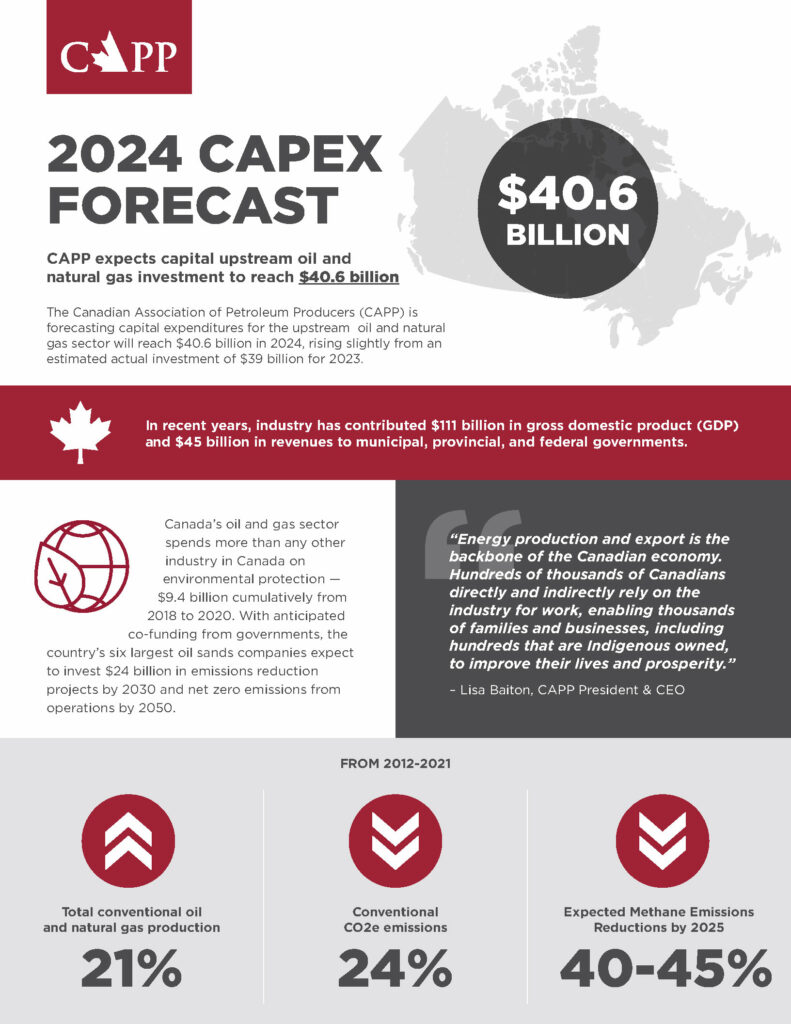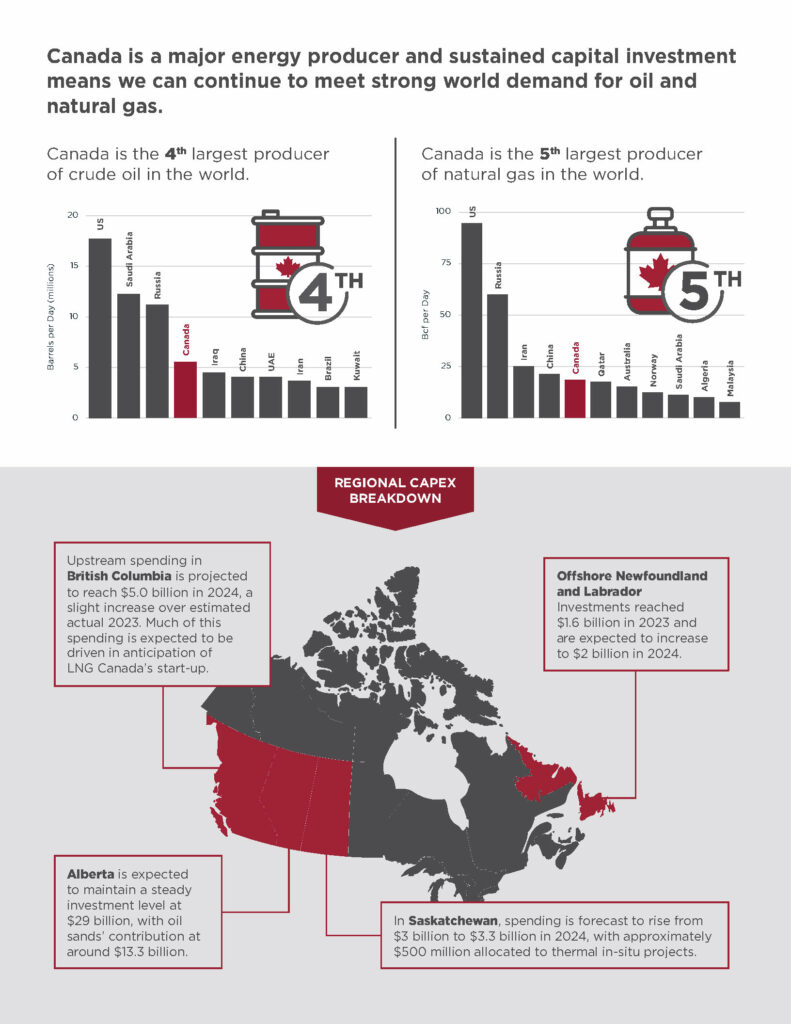The oil and natural gas industry contributes significantly to the Canadian economy
- In total, the oil and natural gas industry accounted for $110.5 billion (5.4%) of Canada’s overall gross domestic product (GDP) in 2022. (Source: Statistics Canada: Table 36-10-0434-06).
- The Canadian oil and natural gas industry employs a significant number of Canadian workers.
- Canada’s oil and natural gas industry is an important source of government revenues to provincial and federal governments. This is from taxes, royalties, mineral leases, land sales and other payments. In 2022, the industry provided $45 billion in annual revenue to governments, including more than $30 billion in royalties alone. These revenues enable governments to operate hospitals, pay for education, run critical social programs, and support the arts, contributing to Canadians’ high quality of living. (Source: CAPP)
- Oil, natural gas, and refined products are a critical component of Canada’s exports, making up about 20% of Canada’s balance of trade.
- The strength of the Canadian dollar is highly correlated to the price of oil which impacts every Canadians’ buying power.
- The industry continues to grow. In 2024, capital investment in the Canadian oil and natural gas industry is forecast to hit $40.6 billion.
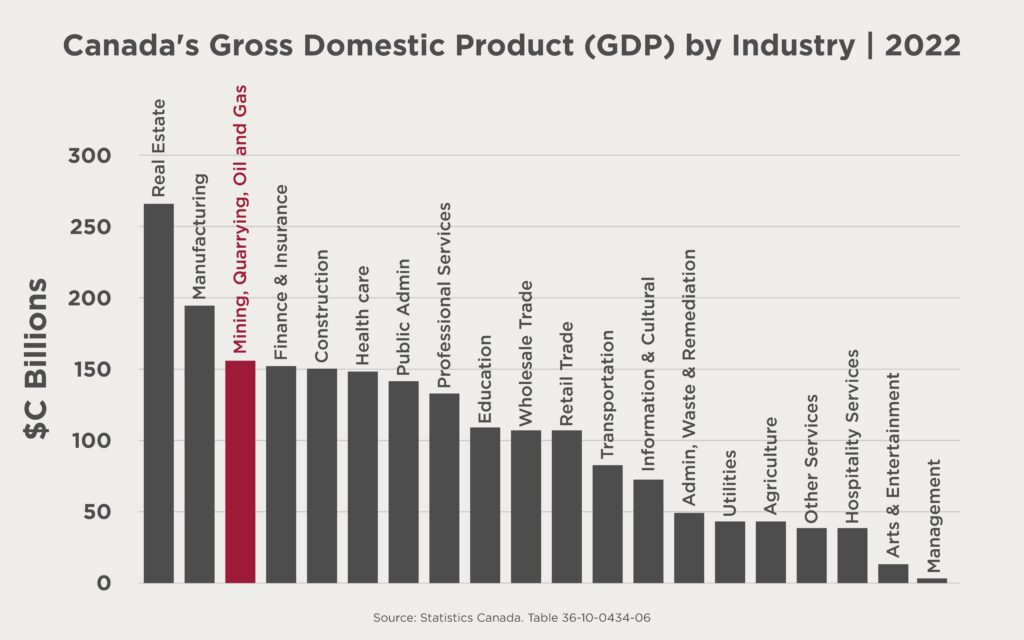
Canada’s oil and natural gas industry is spending an average of $1.4 billion annually on emissions reductions initiatives, and investing in technologies that will reduce emissions in the future. (Source: Arc Energy Institute (2023) – Citing study by Global Advantage Consulting Group for CRIN)
Employment
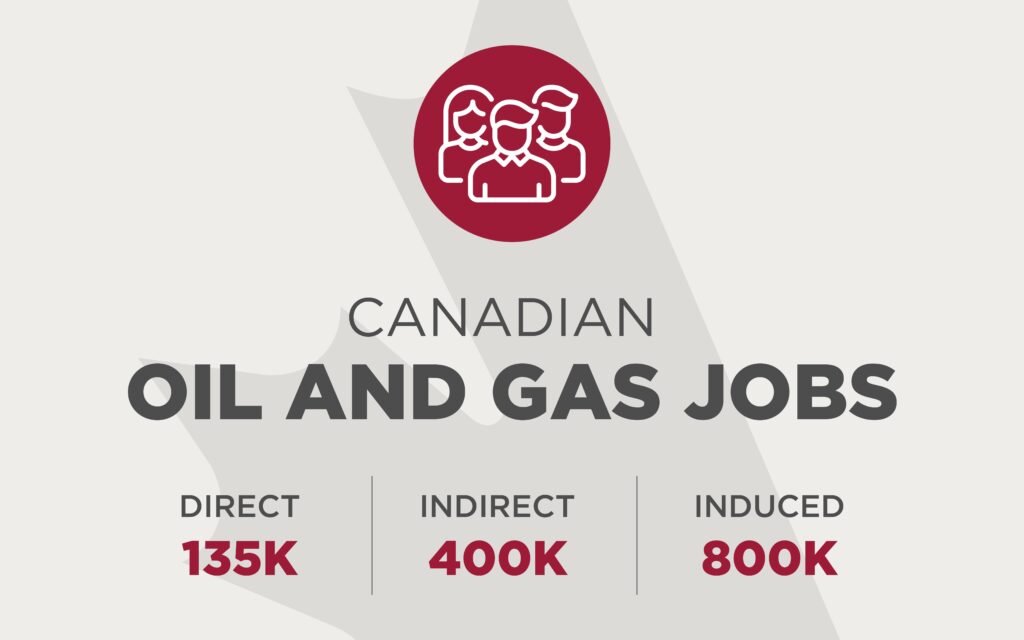
Hundreds of thousands of Canadians rely on the industry for work. The industry employs engineers, scientists, safety technicians, environmental technologists, field operators, construction workers, financial analysts, administrators, and more.
Three types of jobs are associated with the industry:
- Direct: People employed in the industry.
- Indirect: People who provide goods and services to the industry, such as engineering services, roadbuilding and maintenance, or equipment rentals.
- Induced: Jobs arising from oil and natural gas activity, such as at hotels, restaurants, taxis, and retail like grocery stores and pharmacies. Induced jobs are especially important in remote communities where oil and natural gas activities may be vital to local economies
In 2022, the sector directly employed over 134,000 Canadians. Statistics Canada estimates that for every direct job in the oil and natural gas industry, two indirect jobs and three induced jobs are created. When direct, indirect, and induced jobs are combined, the oil and natural gas sector employs or supports employment for about 800,000 people in Canada. (Source: CAPP) The average total compensation for workers directly employed in the oil and natural gas industry is nearly three times higher than the average for all Canadian workers regardless of industry. (Source: CAPP)
The oil and natural gas industry is among the largest employers of Indigenous people in Canada. Nearly 7% of the industry’s workforce identify as Indigenous versus 3.9% of the Canadian workforce average. (Source: IRN)
Taxes, royalties and other government revenues
In 2022, the industry provided $45 billion in annual revenue to governments, including more than $30 billion in royalties alone. (Source: CAPP)
The taxes and royalties that oil and natural gas producers pay to governments are revenues that support all Canadians’ quality of life. These payments support healthcare, education, infrastructure, and the many federal and provincial programs and services used by Canadians every day.
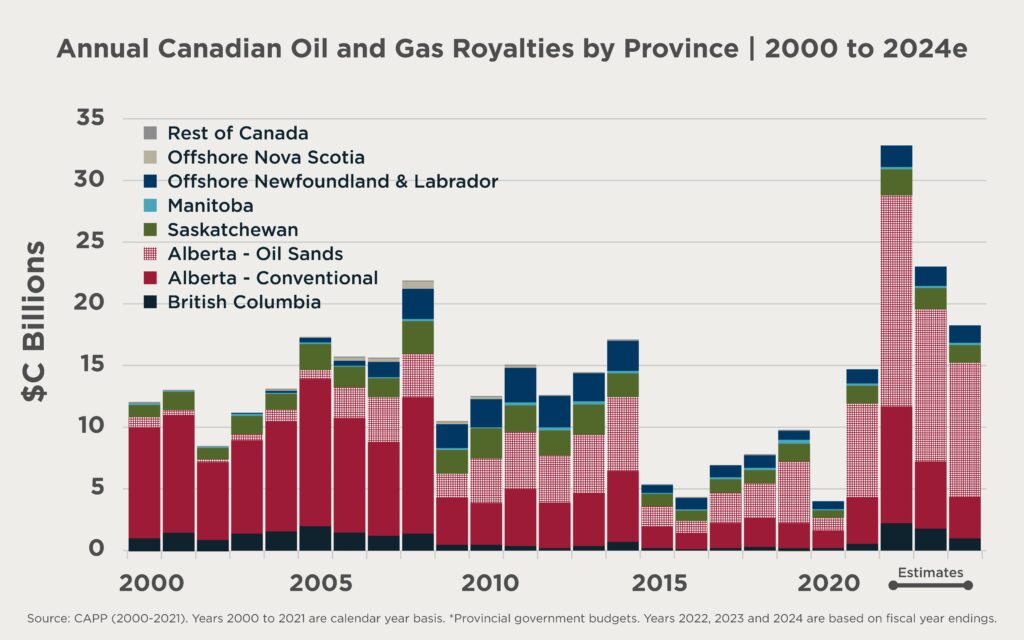
Supply chain
The “supply chain” refers to the network of individuals and companies, and the goods and services they supply that are involved in the full cycle from creating a product to delivering it to a consumer. We often refer to a supply “chain” within an industry due to the many interconnected “links” of goods and services that are required to complete large projects.
In the oil and natural gas industry, an example of the supply chain could be as follows: An oil producer might purchase steel pipe manufactured in Ontario, then retain the services of a Manitoba-based trucking company to transport the steel pipe to Alberta where a local company is contracted to install the steel pipe. These companies are all part of the oil production supply chain and each plays an integral role.
In 2023, CAPP travelled throughout British Columbia and interviewed local residents and business owners, discussing the positive impacts of B.C.’s natural gas supply chain on their professional and personal lives. See their stories here.
Through a broad network of suppliers, big and small, the oil and natural gas industry is active in 12 of Canada’s 13 provinces and territories. This means jobs stay in Canada.
The oil and gas supply chain provides significant opportunities for Indigenous suppliers and businesses. Hundreds of Indigenous-owned businesses make up a significant part of the overall industry supply chain.
Two recent studies commissioned by CAPP found that:
Exports
Oil, natural gas, and refined products are a critical component of Canada’s trade balance, making up over 20% of our total value of trade in 2022. This also represents a significant part of our overall positive trade balance with the United States, Canada’s largest trading partner. (Source: Statistics Canada Table: 12-10-0122-01) In 2020, the value of Canada’s exported oil, natural gas, and refined petroleum products such as gasoline was more than $112 billion.
Crude oil and petroleum products are Canada’s largest export
Crude oil and natural gas are Canada’s largest export, and are a critical part of our positive trade balance with the United States.
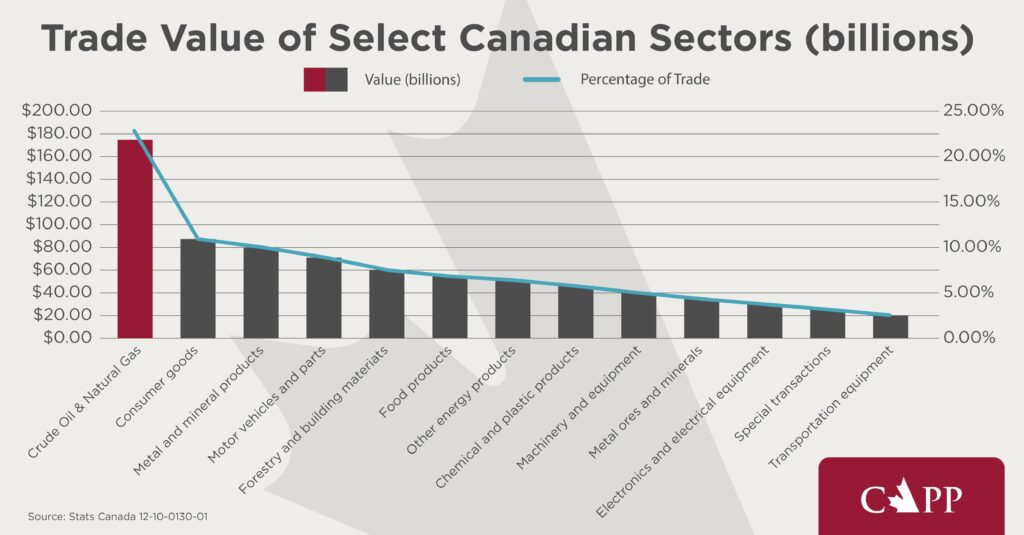
Capital investment
“Capital investment”, also called “capital expenditures” or “capex”, is the money oil and natural gas producers spend to maintain plants, facilities, and equipment, to build new facilities such as pipelines, to research and install technologies to reduce emissions or manage water, and to drill new wells, among other initiatives. Capital investment generates jobs and helps to ensure Canada has a reliable supply of oil and natural gas.
This investment also supports a broad supply chain, reaching thousands of businesses located across Canada.
Increasing capital investment is an indication that the industry is growing and continues to be a source of government revenues and employment. In 2024, capital investment in the Canadian oil and natural gas industry is forecast to hit $40.6 billion. (Source: CAPP)
